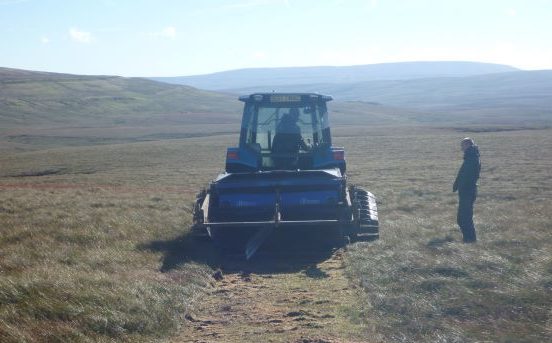What’s special?
Archaeology: Medieval
Medieval (c1066-1550AD)
After the Norman Conquest of 1066, King William ordered the ‘harrying of the north’ aimed at wiping out all potential opposition to his rule throughout northern England.
The newly conquered land was divided up amongst William’s loyal followers, many of whom built castles to protect their property. The area’s transport and communications network was still very much based on the Roman road network and some important Norman castles, of which Brough is a particularly good example, were built on the site of Roman forts.
Other major medieval castles were constructed at numerous places around the fringes of the AONB: examples include Barnard Castle, Raby, Prudhoe, Penrith and Appleby. Many smaller, but still very impressive castles were also built in medieval times, such as those at Langley and Cotherstone.
The North Pennines area was not as badly affected by the Anglo-Scottish conflict of the 13th-16th centuries as the northern regions of Northumberland and Cumbria, but there was still a degree of lawlessness in the late sixteenth century that led to the construction of several bastles (thick-walled defensible farmhouses with living accommodation at first-floor level over a byre) such as the cluster adjacent to the Roman fort at Whitley Castle.
The Medieval Church
Alongside the king and his barons, the other great power in medieval times was the church. All the land owned by the Community of St Cuthbert now came under the jurisdiction of the immensely powerful Prince Bishops of Durham.
Continuing the tradition of earlier times, some sixty square miles of Weardale above Stanhope were maintained as a vast hunting forest, subject to special forest law rather than common law, and many local people were employed in forest management. (Other great medieval forests in the North Pennines included those of Teesdale, Geltsdale, Gilderdale, Milburn, Lune and Stainmore.)
Between 1250 and 1300, Stanhope Park was set up within the forest, covering the area between Westgate and Eastgate, with its headquaters at Westgate Castle. This was effectively a large farm for the breeding of fallow deer, although hunting would also have taken place within it. Outside the Park, some 30 new vaccaries (seasonally occupied, tenanted cattle ranches) were created within the forest by the Bishops of Durham, as cattle production was much more economically rewarding than hunting. Several of the new vaccaries grew into hamlets and villages, some of which still survive today. By the mid 15th century, the Bishops no longer hunted in Weardale and Stanhope Park was itself divided up amongst ten newly created farms.
Medieval lead mining
From medieval times, the North Pennines became one of Britain’s most important lead mining regions. In the 12th century, King Stephen granted the rights to mine all minerals in Weardale to the Bishops of Durham, who made vast sums from leasing out the mining rights to various companies.
Medieval settlement
Most villages in the North Pennines existed in some form by medieval times. Blanchland, occupied continuously since the founding of its 12th-century monastery, is perhaps the most fascinating. Often cited as one of Britain’s most beautiful villages, it consists essentially of an 18th century estate village built on the ruins of the monastery.
Most medieval villages consisted of rectangular houses clustered round a green or, more typically in the upper dales, set out along a road, each house having a long field known as a ‘toft’ behind it. Many villages had their own parish church, to which a ‘tithe’ representing 10% of agricultural production was payable by all villagers.
Beyond the village were communal ‘ridge-and-furrow’ fields and hay meadows, and beyond these, communal grazing land and woodland. The upland pastures in the hills (such as the Weardale vaccaries mentioned above) were occupied seasonally by herds who moved out from the villages in spring along with sheep and cattle, living in crude shelters known as ‘shielings’ through the summer before returning with their beasts the following autumn. The beasts would then be over-wintered in the fields, being fed largely on hay harvested from the village hay meadows.












